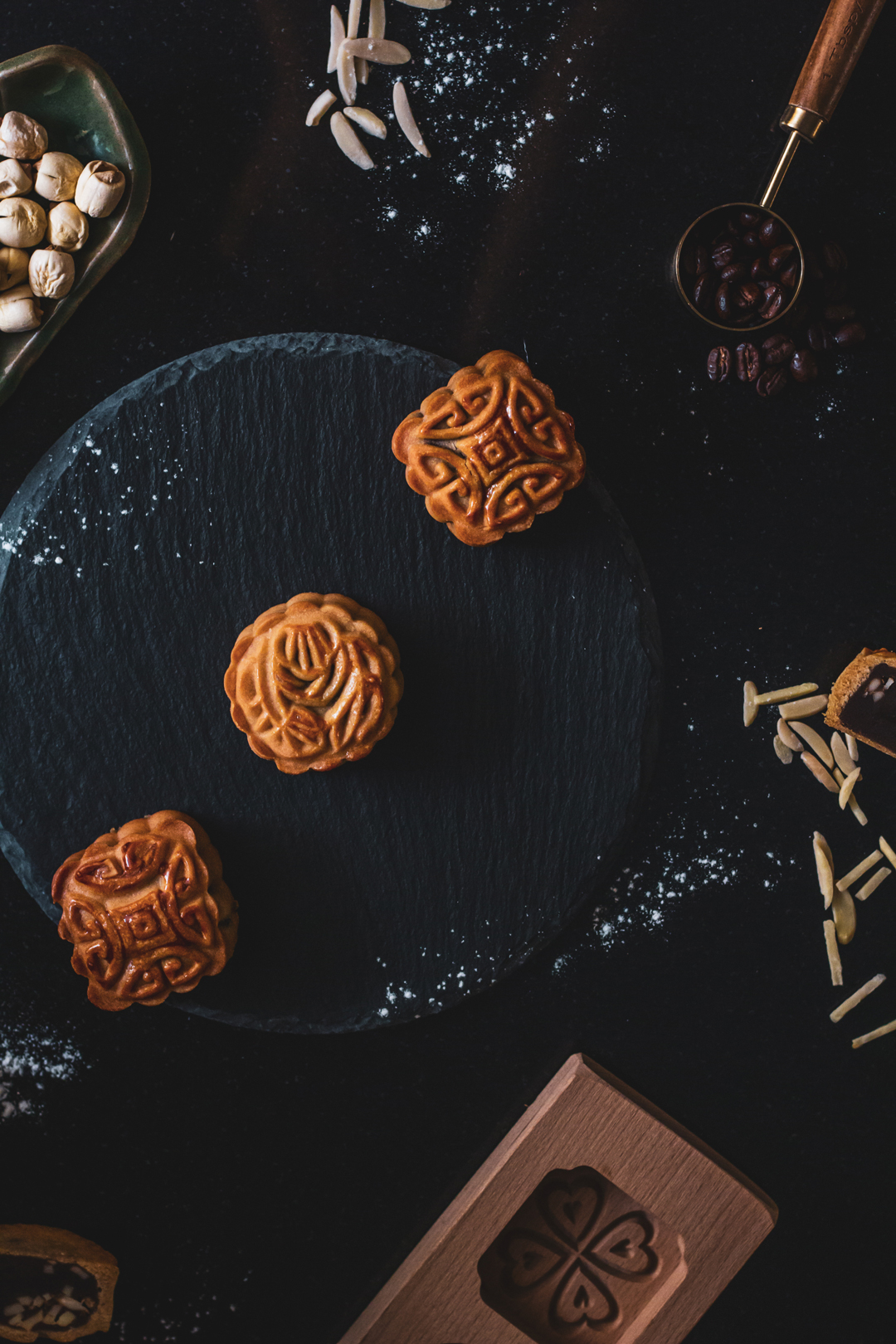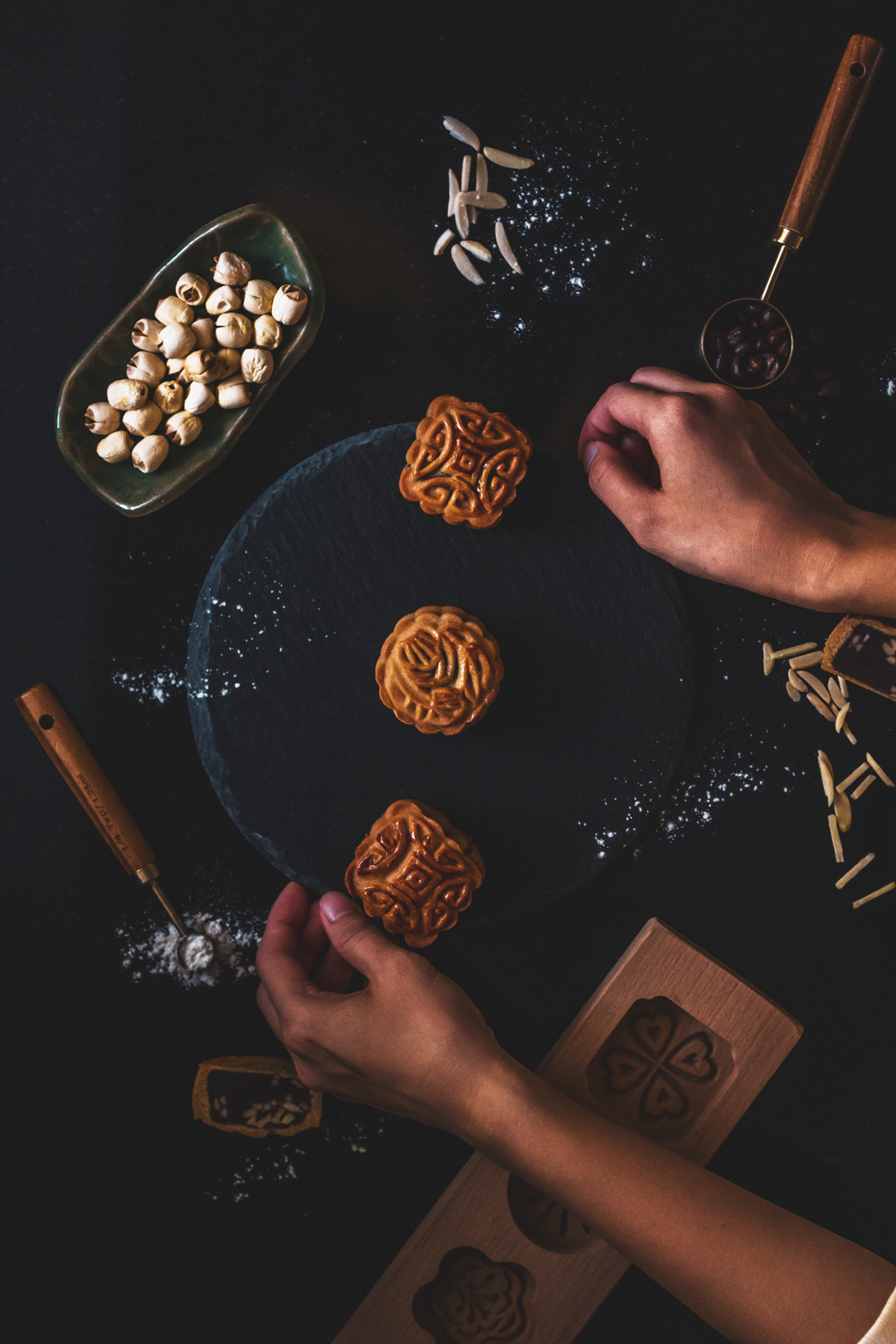
While the European celebrate Easter Day, Thanksgiving, Christmas and New Year, we Asians celebrate Chinese New Year, Dragon Boat Festival, Mid Autumn and Winter Solstice Festival – they are equally corresponding with to the western countries. Traditionally, it is August in the Chinese calendar, where we celebrate the Mid Autumn festival together. While, this year Mid Autumn festival is 1st October.
Conventionally, it made from red bean or lotus seed paste is surrounded by a thin crust and may contain salted duck eggs yolks. But we decide to make a change, infuse coffee into the mooncake. Are you excited to try out this Coffee Lotus Mooncake?
Overpriced mooncakes
It has become a fad to purchase mooncake as a gift among relatives, friends, and business associates to celebrate the Mid-Autumn Festival. As a result, the price of mooncakes has escalated every year due to high demand. The selling price is many folds compared to the cost of the ingredients. Therefore, I thought this is close to absurdity and trigger me to I should develop a simple recipe that everyone can follow to make it at home.
Besides, since mooncake has become too commercial today, so if you are using your homemade mooncake as a gift, they will value your sincerity, hard work, and effort. Making mooncakes does require some skill, and tedious if you start from scratch. Therefore, this mooncake recipe is about how to make the traditional Cantonese style mooncakes by using the ready-made filling, with simplified steps to save time.

Preparing coffee lotus paste
We are able to get a premade coffee lotus paste at Phoon Huat, however, the coffee taste is too bitter for our liking thus we decide to make our own version with just 2 ingredients. All you need are 220 grams of mung bean paste or lotus paste and 10 grams of instant espresso coffee powder.
Put one tablespoon of hot water into the instant coffee and stir until it resembles a coffee paste. In a non-stick pan under medium heat, put the mung bean paste and coffee paste stir until well combined. Stir fry until the colour is consistent and don’t stick to the pan. Depending on the mung bean paste used, if it is too try, you can add some water or cooking oil to facilitate the stir-frying. For moon cake filling purposes, the filling has to be drier such that it will not be deformed when mould into shapes. Once completely cooled, keep it in an airtight container and store in a refrigerator. Best prepare 1 week before the preparation of moon cake.
We also decided to add some chopped lotus in for more flavour, you can also use other nuts like pumpkin seed or sliced almond in it too.
Preparing the dough
The first part of this mooncake recipe is to prepare the dough. There are only four ingredients required – golden syrup, lye water, vegetable oil, and plain flour.
How to make them?
- Measure the amount of golden syrup, lye water, and vegetable oil accurately with a kitchen scale. Mix well.
- Sieve the flour. Add all at once to the above mixture.
- Use a fork or a stainless steel wire whisk to combine all the ingredients. It is hard to mix at the beginning, but after a few stirs, the liquid will start to wet the flour to form a sticky mass. Eventually, it will become a soft dough that picks up all the flour in the mixing bowl.
- Cover the dough with cling wrap. Refrigerate for thirty minutes to let the dough relax. It is more manageable to work with a relaxed dough which is more elastic. As a result, it will not break or crack easily during shaping and wrapping.
To assemble the mooncake
Start by measuring the ingredients:
The ratio of pastry to filling is critical. A good mooncake should have a thin layer of pastry with plenty of fillings. The ratio should be one part of a pastry to two parts of fillings. A skilful chef can use even less pastry to encase the filling. We use 18g of pastry to 35g of filling.
Wrap the filling with the pastry:
Wrapping the filling with the pastry is more delicate than dealing with the egg yolk and the lotus paste. A good quality mooncake should have a thin pastry with consistent thickness.
- One of the easiest ways to achieve this is to roll out the pastry in between two plastic sheets or cling wraps. Roll the pastry to a circle about three times of the dough. You may find a different method of wrapping in other mooncake recipes, which is the individual preference of different recipe developers.
- Remove the cling film on top, fold the pastry towards the filling.
- Pinch away the excess pastry where the pastry is double folded to ensure consistent thickness. You can paste the excess pastry on top where the filling is still exposed.
- Roll the mooncake with your palms to form a ball. This action also ensures the pastry has fully adhered to the filling without gaps in between. Otherwise, the filling may detach from the pastry after baking.
Moulding and baking
Moulding. Roll the mooncake in a bowl filled with some flour. Shake off the excess flour. This step is to ensure the dough will not stick to the mould during shaping. Similarly, plunge the piston of the mooncake mould to the flour, and shake off the excess. Place the dough on the baking tray.
Put the mooncake mould on the dough and plunge the piston downward. The dough will take the shape of the mould, and the pattern will be imprinted on the surface. Plunge the mould down lightly to the dough repeatedly for at least seven to ten times to get a perfect shape. Otherwise, the mooncake will look lopsided and with a blurred pattern.
Baking. Bake it at the middle rack, 175°C/350°F top and bottom temperature for five to six minutes or until the surface start to firm up. Some mooncake recipes use a different temperature but it is all acceptable. It is essential to let it firm up before removing them to apply the egg wash. Otherwise, it will end up with a blurred pattern. Remove the mooncake from the oven and brush the surface of the mooncake with egg wash. Return the mooncake to bake for another ten minutes or until golden brown.
Rest the mooncake
Remove the cake from the oven to cool at room temperature. Transfer the mooncake to an airtight container and keep for three days. During this period, the oil from the filling will migrate to the thin layer of pasty, resulting in a very soft and moist outer layer.

Can’t wait to enjoy the mooncake and have a little gathering session with my family.
xoxo, Joe
Traditional Mooncakes
Ingredients
- Dough
60g golden syrup
1/4 tsp lye water (kansui)
24g vegetable oil
100g cake flour
- Filling
220 grams of mung bean paste or lotus paste
10 grams of instant espresso coffee powder
chopped lotus (optional)
Methods
- Dough
- Mix golden syrup, lye water, and vegetable oil accurately in a mixing bowl.
- Sieve the flour. Add all at once to the above mixture.
- Combine all the ingredients.
- Place the dough on a piece of cling wrap. Refrigerate for thirty minutes to let the dough relax.
- Filling
- Put one tablespoon of hot water into the instant coffee and stir until it resembles a coffee paste.
- In a non-stick pan under medium heat, put the mung bean paste and coffee paste stir until well combined. Stir fry until the colour is consistent and don’t stick to the pan. Depending on the mung bean paste used, if it is too try, you can add some water or cooking oil to facilitate the stir-frying.
- For moon cake filling purposes, the filling has to be drier such that it will not be deformed when mould into shapes. Once completely cooled, keep it in an airtight container and store in a refrigerator. Best prepare 1 week before the preparation of moon cake.
- Wrapping
- Roll out the pastry in between two plastic sheets or cling wraps. Remove the cling film on top, fold the pastry toward the filling.
- Pinch away the excess pastry where the pastry is double folded to ensure consistent thickness. Roll the mooncake with your palms to form a ball.
- Baking
- Roll the mooncake on a surface dusted with flour. Plunge the piston of the mould to the flour, and shake off the excess. Place the dough on the baking tray.
- Put the mooncake mold on the dough and plunge the piston downward. The dough will take the shape of the mold, and the pattern will be imprinted on the surface.
- Bake it at the middle rack, 175°C/350°F top and bottom temperature for five minutes or until the surface starts to firm up.










No Comments